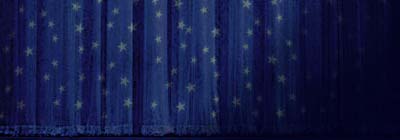
| GPSing |
GPSing isn't in the dictionary yet, but Global Positioning System (GPS) technology is already a big part of our lives. If you do a Google or Yahoo search on "GPSing," you will find numerous links, including "Unit 164," a course from the National Center for Geographic Information & Analysis' (NCGIA) Core Curriculum in Geographic Information Science given at the University of Wisconsin-Madison. The course refers to GPSing as "measuring (GPSing) reference points used in property descriptions." Clearly, GPSing has entered our language and eventually will be defined as simply using a GPS device (Garmin, TomTom, etc.), GPS enabled cell phone, iPhone or iPod Touch to navigate to your local Starbucks, etc. So, how does GPSing relate to Raymond Chandler & Philip Marlowe? As I traveled around Los Angeles taking pictures I also used my Garmin GPSMAP 60CS to record each location as a Waypoint. I have over 200 such Waypoints to date. At some point I'll embed the GPS information in the images and post them on Google Earth. I recently purchased a Mio DigiWalker C320, which can use custom POIs, or Points of Interest - another name for Waypoints. All the new auto/hand held talking units from Garmin, Mio, Naveman, etc., can load files of POIs. The files start as comma or tab delineated text which can be converted into files the units can read. I ran into a problem with the Mio POI Loader in that it creates bad files: One good POI with all the other POIs inside it, which crashes the mapping software. Luckily Google Earth .kml files work in the Mio DigiWalker units. Posted below are two sets of 13 files that can be used with a number of different GPS units. There are generic ASCII and generic comma delimited files which you can use to create POI files in a format that your brand of GPS unit can digest. I used "PoiEdit2007," a windows application, to make these files. Note:"PoiEdit2007," created bad Mio files, so you might need to use Notepad (PC), TextEdit (Mac) or Excel (Mac or PC) to massage these files before your brand's POI Loader will work. Follow the instructions that came with your unit, load the appropriate file, or use the conversion software that came with your unit to load it. Once the file is in your GPS unit, typically on the SD memory card, you are good to go! The first set of POI files are for Chandler residences, and the second set for Chandler locations. I've visited and taken reading at all the places in Los Angeles except for Monrovia and Arcadia. The latter two, and all the distant residences were mapped with Google Earth, which will put you in the vicinity. Most of my Waypoints were made with the GPS unit mounted in my car, so you may not end up smack dab in the middle of a residence or location, but you will be close. So, convert and/or load the appropriate file into your GPS unit, or into Google Earth, and then navigate your way around Los Angeles to see where Raymond Chandler lived, or all the places* Philip Marlowe went. I will be using "An Architectural Guidebook To Los Angeles," by Gebhard and Winter to annotate many of the Chandler Location files as to architectural style in the coming weeks. I'll also be adding new items and add any "back stories" I come across for locations, so stay tuned. Enjoy! Chandler Residence files:
Chandler Location files:
* The 200 plus location digital images I shot include more than just Raymond Chandler's residences and locations from his short stories and novels. There are many "now" images of locations or places in Los Angeles to match vintage images I've collected. There are a number of images of downtown buildings in Los Angeles, most of which never appeared in Chandler's fiction, but which he undoubtedly walked past, entered or drove by. Collectively, the POIs in the Chandler Locations files will give you an interesting tour of Chandler's Los Angeles, specifically, a view of Los Angeles between 1913 and 1946 via the structures that are still standing. Who says Los Angeles has no history? © 2008 Loren Latker
|